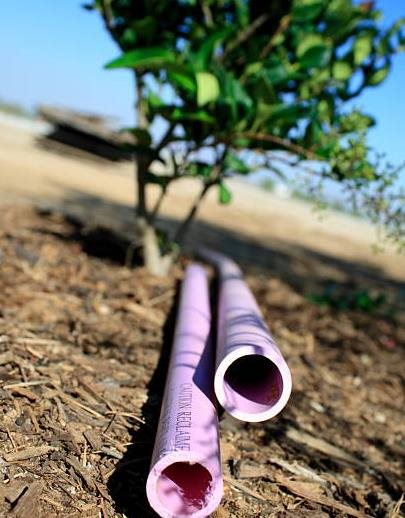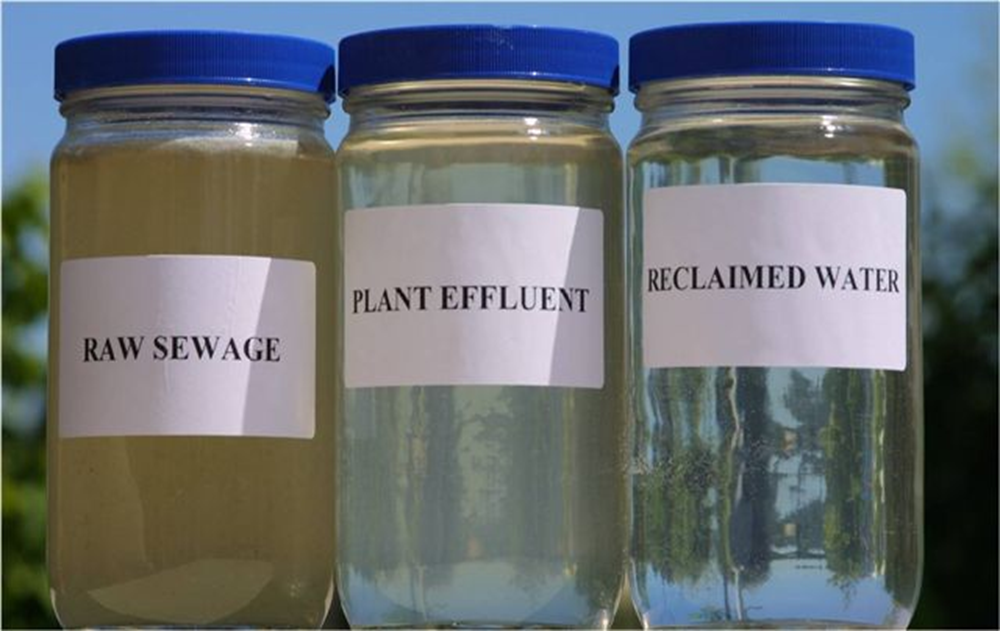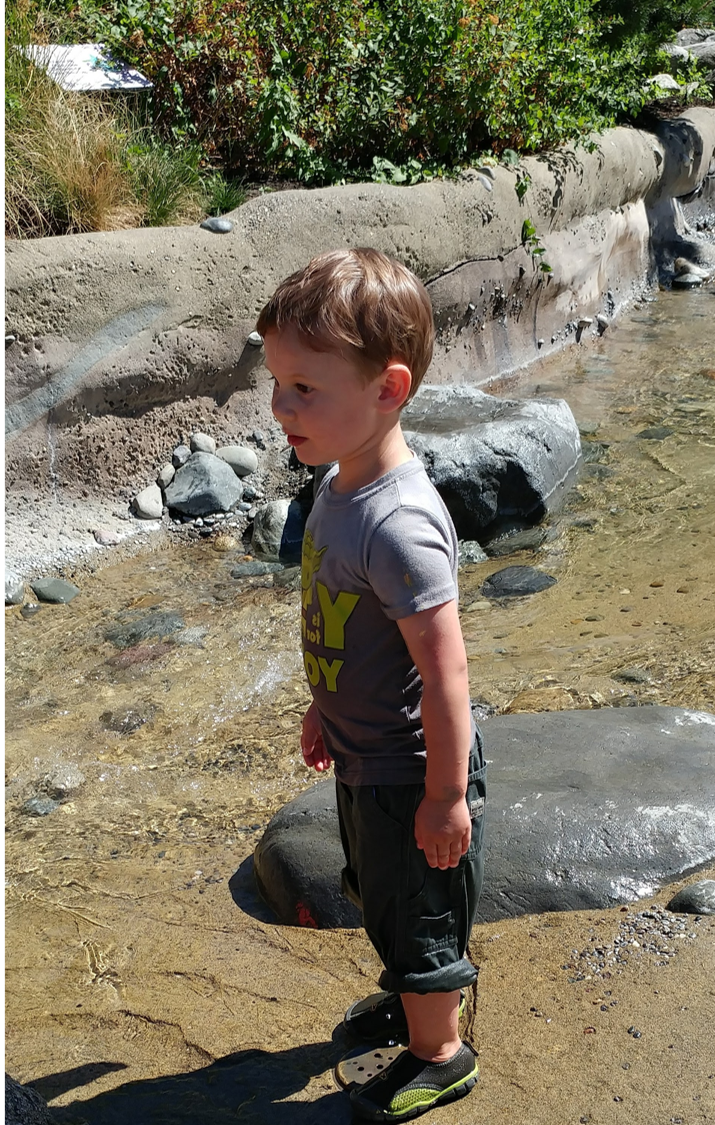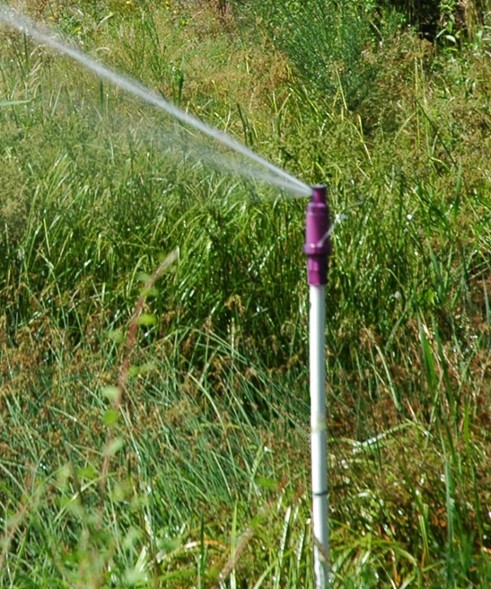Reclaimed water
Reclaimed — or recycled — water starts out as domestic wastewater (sewage), but is then treated and tested to use for specific purposes.
After all the sewage from residences and businesses is collected and treated at a wastewater treatment plant, some is separated, further treated and cleaned, and tested to ensure it’s safe for use. It is then no longer sewage or wastewater. It is reclaimed water and can be used for many purposes.
The departments of Health and Ecology work together to permit reclaimed water projects, and protect public health and the environment.
Reclaimed water is not drinking water. It can be used for watering grass and plants at parks and golf courses, to replenish groundwater, to flush toilets in commercial and industrial buildings, or for similar purposes. It is delivered through purple pipes to help alert construction workers, plumbers, and others that it is reclaimed water and not intended for drinking.
The process of reclaiming water uses advanced technologies to filter and remove pathogens and contaminants. This turns otherwise wasted water into a valuable resource that does not need to be drawn from an aquifer or lake.
Benefits of reclaimed water — it's the right water for the right use.
Washingtonians use reclaimed water for a wide variety of uses where you do not need drinking — or potable — water.
In addition to the uses mentioned above, reclaimed water is used for:
- Wetland restoration
- Replenishing groundwater supplies
- To increase the volume of water in rivers and streams
- Dust control and construction activities
Adapting to a changing climate
As the regional climate changes, warmer springs and hotter summers will decrease the snow stored in the mountains. With reduced snow to melt, less water will be available during critical summer months for both instream needs and human water demands.
By turning wastewater into reclaimed water for reuse, we reduce the discharge of polluted water to Washington’s rivers, lakes, streams, and Puget Sound. It also allows the state’s rapidly growing communities to adapt to — and prepare for — impacts from increased population demands. This will help Washington to adapt to its growing business and economic sectors, as well as climate change.
How does the state permit reclaimed water?
The Washington State Department of Health (Health) and Ecology are both required to review reclaimed water proposals. Our agencies work together to determine if proposed treatment methods and uses will protect public health and the environment, and not affect existing water rights. The lead agency is determined based on the type of facility that will reclaim the water. That agency will only issue a permit to operate the reclaimed water system after requirements from both agencies are met.
The public has an opportunity to comment on permit conditions during the permitting process. Permits are valid for five years and the facility may renew their permit if they are in compliance.
Public health and safety are our top priorities in making, moving, and using reclaimed water
We are working in partnership with Health, along with the assistance of many stakeholders, to develop the rules governing reclaimed water. Safeguards in the rules are designed to match water quality requirements with the proposed uses. This minimizes public contact when lower quality reclaimed water is in use and prevents mixing reclaimed water and drinking water supplies.
We will monitor permitted reclaimed water facilities' operation and performance reports to verify generators are producing reclaimed water that meets the requirements. This will help ensure water quality is protected all the way to the user.
How is reclaimed water treated so it is safe for use?
The treatment process for reclaiming water removes and kills harmful bacteria, viruses, and other pathogens. Reclaimed water treatment and delivery to customers (by pipe or by truck) must follow rigorous requirements in state rules and permits.
We apply the same trusted filtration and disinfection technologies used in the treatment of drinking water to reclaim water. Reclaimed water operators ensure the water is safe before use through reliable treatment and redundant backup processes in the facility design.
The treatment level required for each use depends on whether the public can be exposed to the water after it is treated. Reclaimed water must also meet existing state laws for discharge to the environment — such as to aquifers or rivers.
Treatment systems automatically divert any water that is not fully treated. This means the public will not encounter reclaimed water unless it is safe for its approved use.
We follow the Safe Drinking Water principle of “multiple protective barriers” which includes continuous monitoring, operation, and maintenance by well-trained and state-certified operators.
Pharmaceuticals and other chemicals of concern
Trace amounts of pharmaceuticals and other chemicals of concern have been detected in Washington’s surface water, groundwater, wastewater, reclaimed water, and sediments.
As the ability to detect these chemicals in water has improved, it is now possible to detect trace amounts of them in wastewater and reclaimed water. Studies to date show that exposure to pharmaceuticals in reclaimed water is extremely low. For example, one study showed a person would have to work in fields irrigated with reclaimed water for 28,000 years before being exposed to the equivalent of one tablet of ibuprofen.
According to recent testing, the reclaiming process does reduce or remove a number of these chemicals; however, at this time, there are no standards that set “safe” levels of exposure for these trace chemicals. We will continue to work with our partners at Health to track and respond to research in this area.
Related links
Contact information
Amanda Gillen
Rule Writer
Amanda.gillen@ecy.wa.gov
360-480-2389
Don Bloomquist, P.E.
Reclaimed Water Engineer
Don.bloomquist@ecy.wa.gov
509-723-6219





